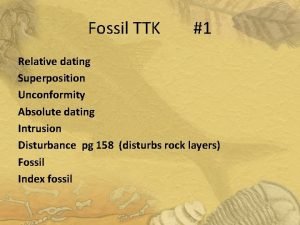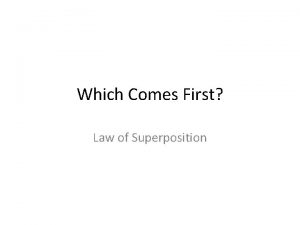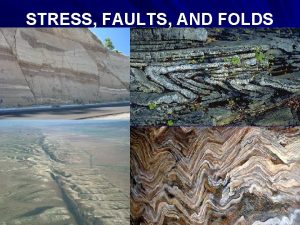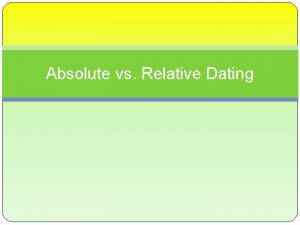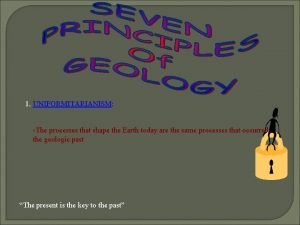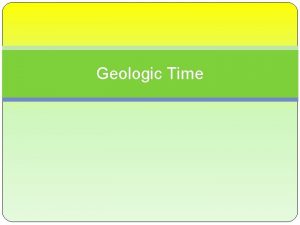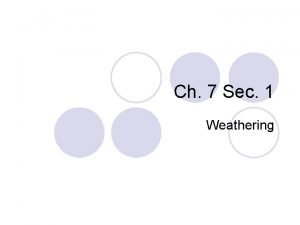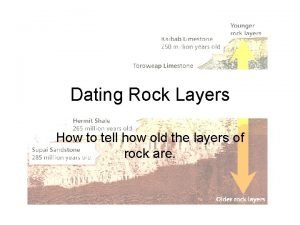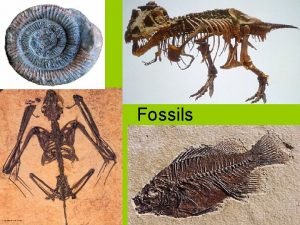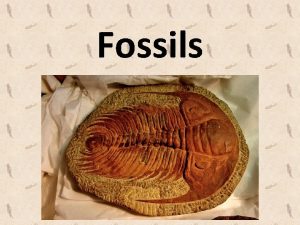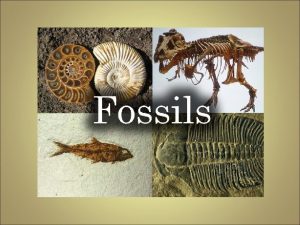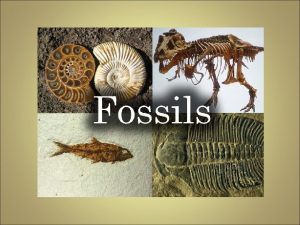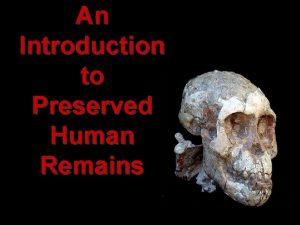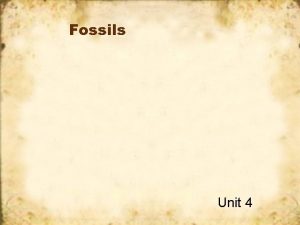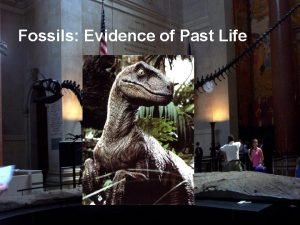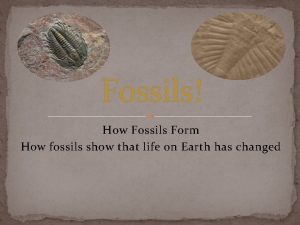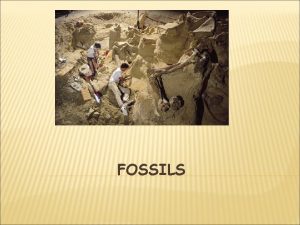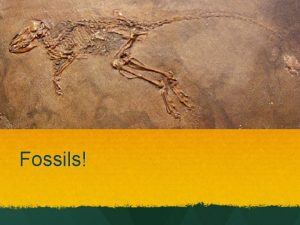Fossils and Rock Layers How are Fossils preserved




















- Slides: 20

Fossils and Rock Layers


How are Fossils preserved? § When an animal dies, the remains are covered by sediment. This sediment hardens and forms rock layers over time. § What process moves the rocks and sediment?

How are Fossils preserved? § When an animal dies, the remains are covered by sediment. This sediment hardens and forms rock layers over time. § What process moves the rocks and sediment? EROSION

Types of Rocks § Igneous Rock (formed when magma cools) § Metamorphic Rock (other rock types transformed by heat and pressure) § Sedimentary Rock (rock formed from minerals deposited near bodies of water; forms rock layers) Fossils form in Sedimentary Rocks!

Why Study Fossils? § Scientists study fossils to learn what past life forms were like. § Paleontologists classify organisms in the order in which they lived. § All the information scientists have gathered is called the fossil record.

PETRIFIED FOSSILS • Petrified fossils form when minerals replace an organism. PETRIFIED FOSSIL The Field Museum in Chicago displays a fossil of a Tyrannosaurus rex. • Water seeps through the layers of sediment to reach the dead organism. When the water evaporates, only the hardened minerals are left behind.

MOLDS AND CASTS • A mold forms when hard parts of an organism are buried in sediment, such as sand, silt, or clay. MOLD FOSSIL This mold, or imprint, is of an extinct mollusk called an ammonite. • The hard parts completely dissolve over time, leaving behind a hollow area with the organism’s shape. • A cast forms as the result of a mold. CAST FOSSIL This ammonite cast was discovered in the United Kingdom. • Water with dissolved minerals and sediment fills the mold’s empty • A cast is the opposite of its mold.

Molds and Casts Cast

CARBON FILMS • All living things contain an element called carbon. • When an organism dies, eventually, only carbon remains. FERN FOSSIL This carbon-film fossil of a fern is more than 300 million years old. • The thin layer of carbon left behind can show delicate parts, like leaves on a plant.

TRACE FOSSILS • Trace fossils show the activities of organisms. • An animal makes a footprint when it steps in sand or mud. FANCY FOOTWORK This dinosaur footprint was found in Namibia, Africa. • Over time the footprint is buried in layers of sediment. Then, the sediment becomes solid rock.

PRESERVED REMAINS Some organisms get preserved in or close to their original states. Here are some ways that can happen. Amber An organism, such as an insect, is trapped in a tree’s sticky resin and dies. More resin covers it, sealing the insect inside. It hardens into amber. Tar An organism, such as a mammoth, is trapped in a tar pit and dies. The tar soaks into its bones and stops the bones from decaying. Ice An organism, such as a woolly mammoth, dies in a very cold region. Its body is frozen in ice, which preserves the organism—even its hair!

Index Fossils § Index Fossils - Fossils that are widely distributed for a short period of time in the world and are used to tell the relative age of rocks.

Index Fossils

Relative Age vs. Absolute Age § Relative Age § The age based on compared position relative to other rocks – applies to both sedimentary and igneous rocks § Absolute Age § The number of years since the rock has formed based on radioactive decay of atoms in minerals in Igneous rock and some metamorphic rock

Law of Superposition § Which layer is the oldest? § Which layer is the youngest?

Law of Superposition § In horizontal layers of sedimentary rocks, the oldest layer is at the bottom. § Each layer above is younger than the layers below it.

Intrusions and Faults § Sometimes an igneous intrusion or fault will cut across or into the rock layers. § The intrusion or fault will always be younger than the rocks being intruded or displaced.

Intrusion Fault

Unconformity § Unconformity – Erosion causes new rock layers to meet older rock layers. This leads to a “gap in the geologic record” (missing rocks layers and fossils).
 Folding types
Folding types Antigentest åre
Antigentest åre Igneous and metamorphic
Igneous and metamorphic Chapter 21 fossils and the rock record
Chapter 21 fossils and the rock record Which letter indicates when dinosaurs became extinct
Which letter indicates when dinosaurs became extinct Chapter 3 standardized test practice answers
Chapter 3 standardized test practice answers A rock climber's shoe loosens a rock and her climbing buddy
A rock climber's shoe loosens a rock and her climbing buddy Skewards
Skewards A stress force that pulls rocks apart
A stress force that pulls rocks apart Dating
Dating Shape of the earth
Shape of the earth An ordered arrangement
An ordered arrangement A bend in layers of rock sometimes caused by plate movement
A bend in layers of rock sometimes caused by plate movement Youngest to oldest rock layers
Youngest to oldest rock layers The process by which outer rock layers are stripped away
The process by which outer rock layers are stripped away Rock layers oldest to youngest
Rock layers oldest to youngest Rock cycle
Rock cycle Igneous metamorphic and sedimentary
Igneous metamorphic and sedimentary Rock climbing rock climbing
Rock climbing rock climbing Rock stages
Rock stages Safe public and fair judiciary
Safe public and fair judiciary
